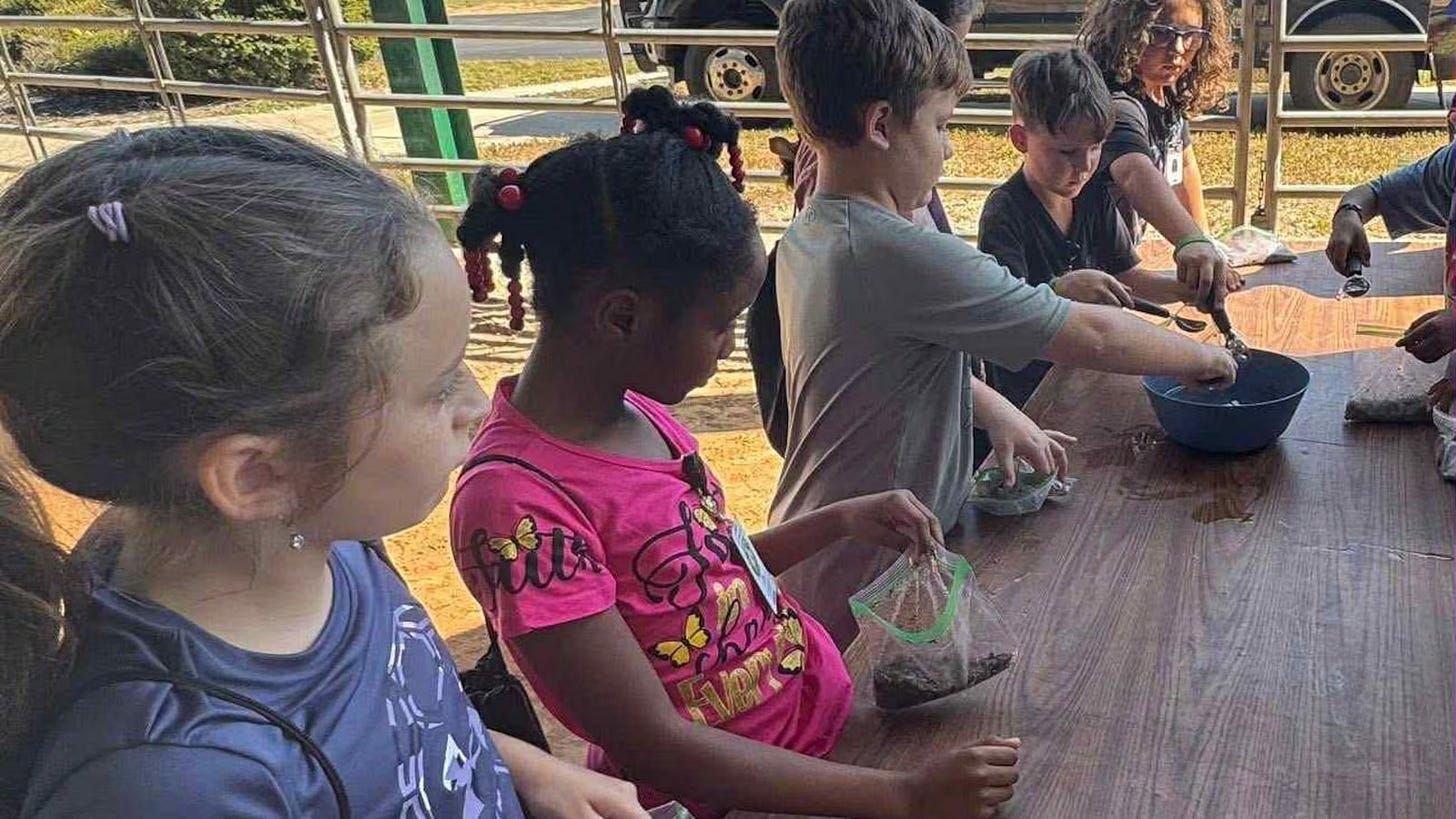Students Explore Farming and Local Food Sources During Manatee County’s Farm City Week
Thousands of Manatee County elementary students are getting a firsthand look at how agriculture shapes their community through this week’s 4-H Ag Venture program, held at the Manatee County Fairgrounds in Palmetto.
Nearly two thousand students are rotating through hands-on learning stations where they engage with farmers, agricultural educators, and extension professionals. The program is designed to help children understand where their food comes from and how farming impacts their daily lives. During the field trip, students learn about crops, livestock, plants, natural resources, and the work involved in food production.
Ag Venture is a signature event of Farm City Week, an annual celebration highlighting the link between local agriculture and the broader community. Organizers say the immersive lessons help students develop lifelong awareness of agriculture’s importance to Manatee County.
According to Manatee County Information Outreach, agriculture remains one of the county’s most significant economic drivers. The county generates $322 million in agricultural product sales each year from 213,000 acres dedicated to farming—representing 37 percent of its total land. Those operations include vegetable farms, livestock and forage production, citrus, and ornamental horticulture.
Manatee County ranks first in Florida for tomato production and grows seven of the state’s top economic crops, including cucumbers, peppers, potatoes, green beans, sweet potatoes, and cabbage. It is also the 7th-largest statewide in market value of ornamental plants, with greenhouse, nursery, floriculture, and sod operations generating $91.3 million annually.
Local commercial fisheries add to that economic reach, producing more than 8.9 million pounds of seafood each year with a dockside value exceeding $6.7 million. Stone crab, grouper, snapper, mullet, and shrimp are among the leading species harvested by Manatee County fishermen.
The county’s livestock industry contributes more than $39 million in value, rounding out a diverse agricultural sector that students are learning about up close this week. Organizers say the goal is simple: connect children to the land, the food they eat, and the people who make it all possible.

